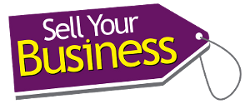
Due Diligence Naivety
When I first heard the words ‘due diligence’ I wondered what that was all about and was told ‘oh, its when the potential buyers look at your books’.
I took that to meant the business‘ finances; so things like the profit and loss account, balance sheet, bank account statements and the management information reports that we had.
That’s probably true if your business is turning over less than a million. But as my business didn’t fall into that category our solicitor passed over a due diligence questionnaire (DDQ) which ran to 12 pages! It was then when I had an ‘OMG’ moment as I looked through and saw that it covered all the different functional areas of the business.
We started collating the document list ASAP! And to help you know what you’re getting yourself in for we’ve reproduced the list in our ‘Preparing for Due Diligence Checklist Pack’ along with my recommendation for your data room folder structure.
On top of this during the business sale process in order to field and answer all the demanding questions from the buyers, the documents started to pile up.
By the end of the process, for my business, it turned out we had prepared approximately 800 documents! We had to provide examples of everything. Detailed sales forecasts for the next 3 years, samples of our software code (for IPR), a record of the last 2 years salary increases, a list of leavers and reasons why they left the company.
Some of the information was provided by the solicitors, like property searches and they helped with scanning paper contracts as we didn’t have the right tool nor resources to spend on this.
But the vast majority of the documents, 95%, has to come from the business and your business broker isn’t really going to be able to help besides pointing out what documents are essential and missing.
Delegate, delegate, delegate
Preparing 800 documents for due diligence did take a toll on me. Luckily only a core 30 documents changed over time that needed to be updated during the business sale. However, in order to get all the documents ready in the first place, I changed the business operating processes to be more efficient so I could just use the documents as they stood or with minor ‘tweaks’ and at the very least have the right company folder structure where I could locate the information very quickly. I also made sure that processes such as sales, finance, account management were documented which is simply good practice to do.
How you know you’re fully prepared
Having this all in place allowed me to field the questions from potential buyers quite easily and provide the answers within a very short time period, mainly within a 24 hour turnaround time. Being prepared allowed me to refer them to the right document in the data room to go look at instead of unique answers to each question. And if the answer wasn’t readily available, that’s when it got created and added to the data room.
Of course going around the sales process over five times does make you a pro and you quickly find ways to make it all the more efficient. That’s why I created the ‘Preparing for Due Diligence Checklist Pack’. It gives you a head start as it includes all the common documentation in a checklist that a business going through due diligence needs.
As long as you have one person that is responsible for managing the data room and can source the documentation from the business whenever needed (this includes 11pm at night), you will find the whole due diligence stage easier and best of all it doesn’t have to all be done by you – allowing you to focus on the business and not in it!
Joanna Miller helps business owners navigate their way through the start to finish process of selling a business. Her specialty is helping owners understand how to prepare and make the most of their business sale process to maximise their company’s value. To understand how you can sell your business quickly for the highest sales price, purchase her book, “How To Sell A Business: The #1 guide to maximising your company value and achieving a quick business sale”
